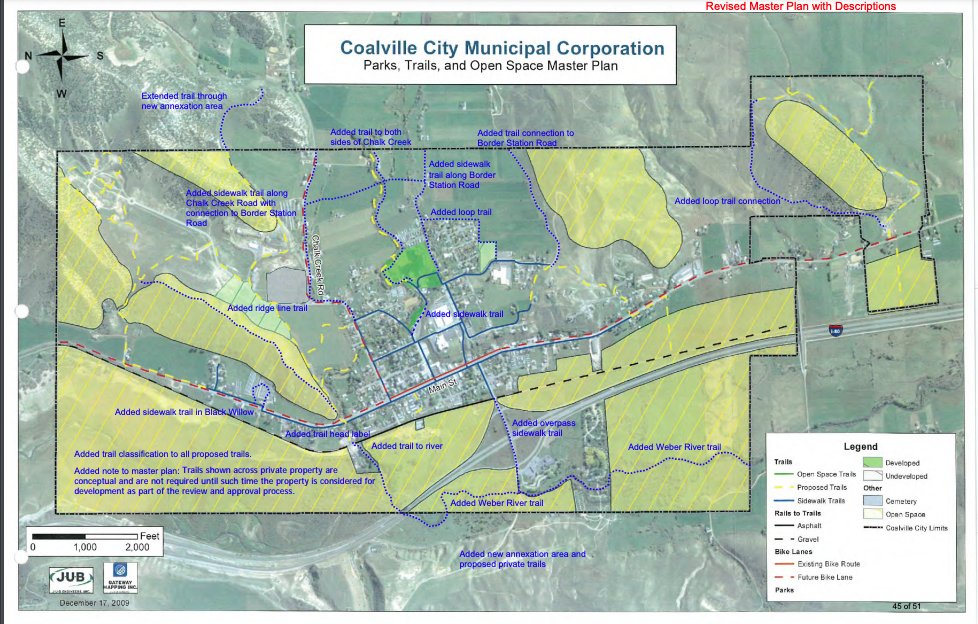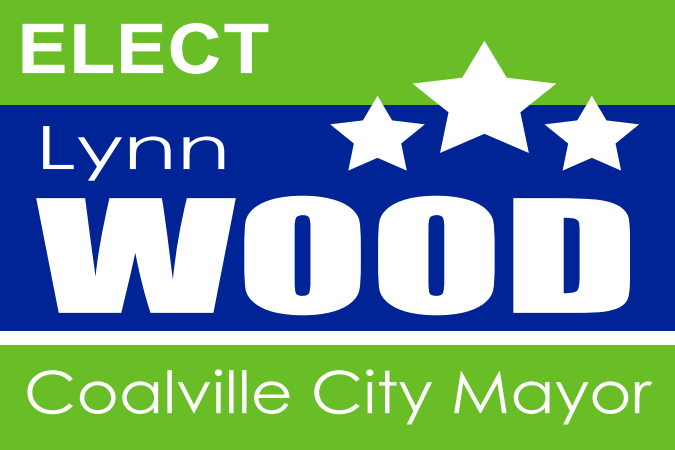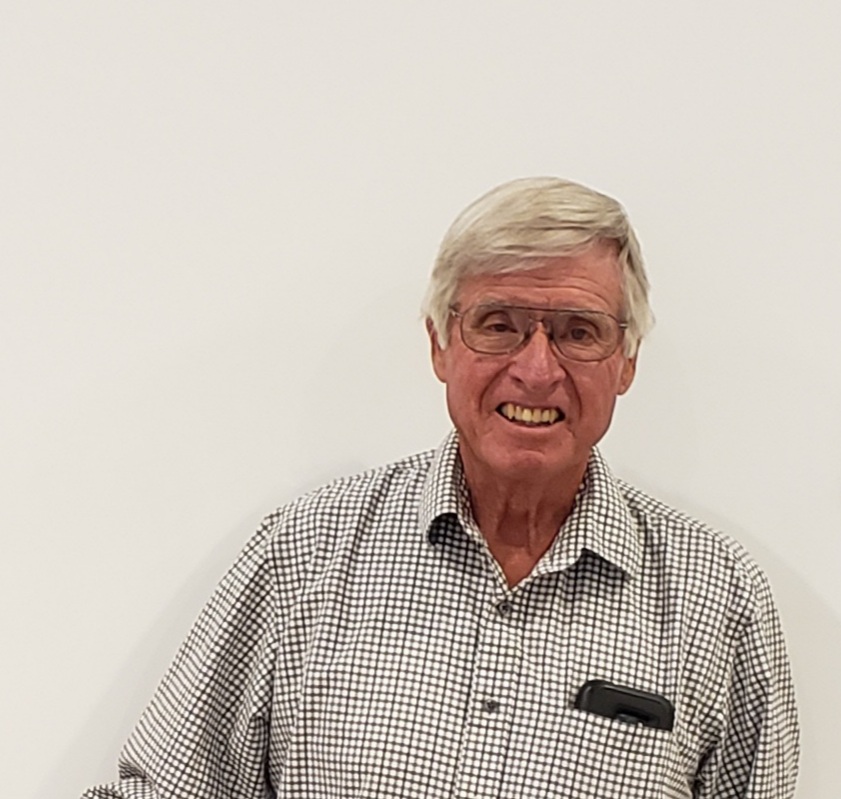The Coalville City Planning Commission met to discuss Parks, Trails and Open Space followed by a review of the Wohali Permitted Use Application.
PLEASE NOTE: This summary is based on the citizen’s perspective from those in attendance and listening on Zoom. Please read the official meeting minutes when available for complete details.
Parks, Trails and Open Space
Things are moving along with the code amendments for the Parks, Trails and Open Space. The Commissioners discussed where predetermined spaces might be reserved in relation to the City’s Open Space Master Plan. The Chalk Creek area as well as the Weber River area were discussed. Dusty France suggested reviewing the annexation boundary area to plan for future expansion and Tonja Hanson said it would be a good idea to tie in to the County Trails Master Plan.
Linda Vernon mentioned that they need to find out what the public wants before they put a lot of work into it. Don Sargent will refine and bring back for further discussion at a later date.
Wohali Permitted Use Application
Background Information
Don gave a brief history of the project. The first application approved by the City Council in December 2019 has been withdrawn by the developer and correspondingly the citizens have withdrawn the referendum. A grading and building permit for the golf course only has been approved by the City Staff. A group of citizens filed an appeal of the golf course approval however the City Council did not grant the appeal and grading work has begun on the golf course.
Nightly Rental Units
It’s clear that the 125 residential units and the golf course are permitted uses in the AG:20 zone and not much discussion was needed. The most controversial issue was the number, if any, of nightly rental units that will be allowed under the current code. Don Sargent passed out a list of criteria for the Commission to consider. He indicated that at a staff level there was not a clear recommendation. He asked that the commissioners give direction as to how they interpret the code.
Density
The maximum density allowed by the AG-20 zoning is 125 units and that is being used by the residential lots. The applicants are attempting to qualify the nightly rentals as a “resort support facility” to the golf course claiming no density is required however there is not a definition in the code for “resort support facility”.
The developer was unclear about exactly what these nightly rental units would look like. Would they be one, two or three bedroom? There were a lot of words used to describe them – lodge, cottages, lots, casitas. Dusty France explained his understanding, “No matter what you call it, the nightly rental is the use of the structure. That is how I viewed it throughout the whole thing.” Essentially the underlying structure requires density and the nightly rental is a use of that structure.
The developer’s attorney hotly disagreed and there was an interesting discussion (roughly quoted) that followed:
Developer’s Attorney: Your code says a dwelling does not include a hotel, lodge, nursing home.
Dusty: It looks like a house. You are saying it is not a house.
Developer’s Attorney: It is a support facility.
Dusty: How do you structurally build a nightly rental house differently than a house.
Developer’s Attorney: It is structural methods and building code.
Dusty: How does it look different than a house?
Developer’s Attorney: We are happy to respond to other questions.
Tim Bristow and Linda Vernon both seemed to agree that each one of those 303 nightly rental units would require a water and sewer hookup and be separate for tax purposes. There was no clear decision by the Planning Commission on whether the nightly rentals would be allowed with no density allocation.
Critical Mass
In the last Planning Commission meeting the developer was asked to provide justification for the requested 303 nightly rentals requested. They prepared a memo comparing their request to 4 golf communities in the area.
You can find the the memo here:
The memo explains that a certain number of memberships must be sold to hit “critical mass” in order for the golf course to be economically feasible. Linda asked about the examples of Tuhaye, Victory Ranch and Promontory and if any of these are examples where the rentals were not included in the density.
Wohali group responded that Promontory was a negotiated deal, that Victory Ranch does not have much of a rental pool and the Red Ledges might have nightly rentals but they were not sure how the density was calculated. It was likely calculated based on how many were needed to make the resort work. It was done in a resort zone.
Linda clarified, “We don’t have a resort zone.”
It was brought up by Dusty that it makes sense on the developer’s end to base it on “critical mass” but on our end (the City’s) it does not. There needs to be a uniform basis to come up with a percentage. Claiming a need for a certain number of units or the golf course will fail is not the reason that these nightly rentals need to increase.
Don Sargent appeared to agree that a land use decision can not be based on economics. Having the project be successful is important to the city as well as the developer but it can’t be the main basis for the decision.
Water and Other Considerations
Linda Vernon brought up some other important points including that the issues surrounding water have not been resolved and could be a point to negotiate. She also made a very important observation that a “golf course” was permitted by the code not a “golf resort.” She suggested using a percentage basis of 23% of residential to nightly rental units that was used in the first application as a possible criteria to follow.
Tonja explained that she had worked at Sun Valley resort where there were 400 night rental units but 3 golf courses. She suggested using comparables as a way to approach the problem
Dusty summed up what appeared to be the opinion of a majority of the Commissioners, “The golf course is going in and we want it to succeed. We don’t want to see it fail. It would have a negative impact on the city and us. What does the road for it to succeed look like?”
Next Steps
The developer group left understandably angry and frustrated. Linda Vernon suggested the matter be tabled for the evening and that the issue is not ready for a public hearing. She expressed disappointment that the first application did not go to a vote so the true voice of the people could have been heard.
Citizen’s Analysis
Linda Vernon ran this difficult meeting like a champ and kept the discussion focused on the real issues. All of the Commissioners had excellent points and it seemed they are really seeking a solution that serves the developer’s needs without sacrificing strict adherence to our code. They are also working hard to protect our water source and looking for ways to make equitable decisions on future developments based on how this project is handled.
Although we are thrilled not to have the expense and work of an election we share Linda’s disappointment that the public voice was not definitively heard. Although a simple “yes or no” to the large project would not tell us what the people do want – only what they don’t want. The citizen group has no desire for another referendum. Our next step will be to find ways to collect good reliable information on public opinion that can be used to shape future policy decisions.
Good comprehensive city planning does not come through citizen referendums or initiatives. It is accomplished by the Planning Commission and the City Council working with public input on policy decisions. We have to let our city leaders do their job to implement the public’s vision but we need to be clear about what that collective vision is.




